France’s Framatome and Germany’s Technical University of Munich (TUM) have agreed to create an industrialization process for the manufacture of monolithic molybdenum-uranium (U-Mo) fuel for the TUM’s FRM II research reactor. Framatome said that this low-enriched fuel will benefit from the highest uranium fuel density ever loaded into a European research reactor.
The twenty thermal megawatt FRM II research reactor has been operating since 2005. It is one of the most effective sources of high-flux neutrons in the world. The reactor is not used to generate electricity. It is used to provide a neutron source for industrial and scientific use. The neutrons it generates are also used to produce medical radioisotopes and for the doping of high-purity silicon for the semiconductor industry. The reactor has a facility for teletherapy of malignant tumors using fast neutrons.
The FRM II currently uses fuel enriched to over ninety five precent uranium-235 to generate its dense neutron flux. Such high-enriched uranium (HEU) is considered to be a nuclear proliferation risk. TUM has agreed with the German government and the Bavarian State, who finance the reactor, to work towards converting it to fuel with lower enrichment when a suitable fuel is becomes available. This is also a condition of the reactor’s operating license, which was issued in 2003.
Monolithic U-Mo is the only fuel which can allow the reactor to perform as intended while using a low enrichment of less than twenty percent uranium-235, according to TUM. This is possible because of the high uranium density in the fuel, Framatome said.
In 2019, TUM contracted Framatome to develop the U-Mo foils manufacturing technique to utilize the existing technology of embedded foils in a cladding of aluminum. The first U-Mo foils were successfully manufactured in 2022 at Framatome’s Compagnie pour l’Étude et la Réalisation de Combustibles Atomiques (CERCA) Research and Innovation Laboratory (CRIL) at Romans-sur-Isère in France. Inaugurated in 2019, CRIL is dedicated to developing uranium-based fuel for international research in physics and nuclear medicine.
CRIL, in cooperation with TUM, developed the key steps of the manufacturing process for a high-quality U-Mo fuel. This has included the manufacture of small-scale prototypes, the establishment of a qualification procedure, and the installation of a pilot line in its research facility in Romans. Irradiation of the first monolithic U-Mo fuel plate prototype is scheduled for late 2024.
François Gauché is Vice-President of CERCA. He said, “We have been working on this project since 2019 and we are proud to celebrate this important milestone with our client. Our teams rose to the challenge of developing a high-tech fuel to meet the needs of research reactors and ensure their sustainability. We are now ready to take this to the next level and manufacture this innovative fuel.”
Christian Pfleiderer is the scientific director of the FRM II. He said, “FRM II and Framatome have been working since 2019 to set up a European production line for monolithic U-Mo fuel The hard work of our teams has paid off. This new fuel is the guarantee for a reliable and sustainable supply of neutrons for research and innovation.”
Category: Nuclear Reactors
-
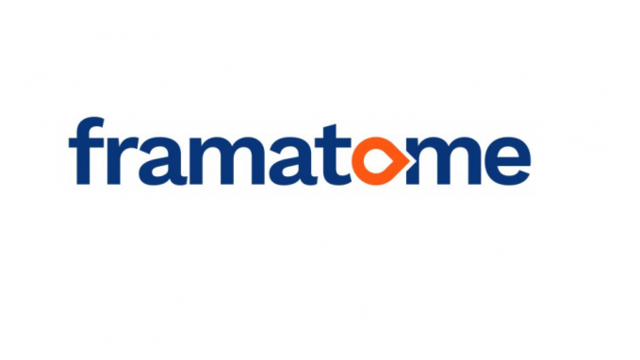
Nuclear Reactors 1379 – Framatone Working On New Fuel For University of Munich Research Reactor.
-

Nuclear Reactors 1375 – Oklo Is Working On Microreactors To Supply Electricity To AI Server Farms – Part 2 of 2 Parts
Part 2 of 2 Parts (Please read Part 1 first)
Oklo’s proposed thirteen thousand-square-foot Aurora powerhouse, featuring a fifteen-megawatt fission reactor, is smaller than conventional nuclear power plants and looks more like a sleek ski chalet than the Cold War-era plants with their iconic curved towers. The plant is going to be built at the Idaho National Laboratory (INL) which is a research facility where Oklo has been given an Energy Department grant to test recycling nuclear waste into new fuel. DeWitte says the design is safer that conventional power reactors, citing the use of liquid metal as a coolant instead of water.
The nuclear power industry hasn’t significantly expanded its share of the U.S. energy mix for decades. It has limped along in the face of popular opposition fueled by infrequent but devastating accidents like those in Chernobyl, Ukraine, in 1986 and in Fukushima, Japan, in 2011. Even the newest nuclear plants still generate waste that can remain dangerously radioactive for centuries. This raises the need for effective disposal or recycling efforts like the one Oklo is testing.
As the climate crisis accelerates, fifty seven percent of Americans now support expanding nuclear energy according to a Pew Research survey last year. Nuclear power currently makes up only nineteen percent of the nation’s overall energy generation in the U.S. There are ninety-three commercial nuclear power reactors operating today in the U.S. This is down from a peak of one hundred and twelve in 1990. By one estimate, up to eight hundred gigawatts of new nuclear generated electricity will be needed by 2050 to meet current green energy targets.
But as tech firms embrace AI, many data centers are already struggling to add capacity fast enough to remain affordable, with data center rents jumping nearly sixteen percent between 2022 and 2023 alone. The demand crunch is one reason major industry players have been increasing their nuclear investments.
Microsoft signed a deal last summer with Constellation, a top nuclear power plant operator, to supply nuclear-generated electricity to its Virginia data centers. In 2022, Google took part in a two hundred and fifty-million-dollar fundraising round for the fusion startup TAE Technologies. In late 2021, Amazon founder Jeff Bezos and other investors raised over one hundred and thirty million dollars for Canadian nuclear company General Fusion.
Ross Matzkin-Bridger is a senior director at the Nuclear Threat Initiative, a nonprofit group focused on reducing nuclear and biological risks. He said that for tech firms, it makes sense to tap directly into nuclear plants “instead of sourcing electricity from the grid.” In addition to being clean, he mentioned that many recent nuclear projects are also compact. “You can fit a lot more energy per acre in nuclear energy than you can with any other technology.” he said.
Ayan Paul is a research scientist at Northeastern University who studies AI. He said that beyond Silicon Valley, “big investment firms are actually starting to believe that this is going to take off. People have started to believe that these kinds of energies are going to fuel our population.”
However, some experts warn that efforts to expand nuclear power shouldn’t be rushed, no matter how fast demand is growing.
Ahmed Abdulla is an assistant mechanical and aerospace engineering professor at Carleton University. He said, “We need nuclear power to get to a low-carbon future.” However, for engineering projects that have historically taken decades, the regulatory process needs to be a methodical one. He added that “There is a chance to make serious mistakes if we sprint to the goal.” -

Nuclear Reactors 1374 – Oklo Is Working On Microreactors To Supply Electricity To AI Server Farms – Part 1 of 2 Parts
Part 1 of 2 Parts
Tech firms and Silicon Valley billionaires have been pouring money into nuclear energy for years. They have pitched sustainable power sources as crucial to the green transition. Now they are promoting artificial intelligence.
While generative AI has grown at lightning speed, nuclear power projects are heavily regulated and usually advance at a very slow pace. That’s raising questions about whether advances in nuclear energy can cut emissions as quickly as energy-hungry AI and other fast-growing technologies are adding to them.
Sarah Myers West is managing director of the AI Now Institute, a research group focused on the social impacts of AI. She said, “If you were to integrate large language models, GPT-style models into search engines, it’s going to cost five times as much environmentally as standard search.” At current growth rates, some new AI servers could soon consume more than eighty-five terawatt hours of electricity each year, researchers have estimated. This is more than some small nations’ annual energy consumption.
Myers West continued, “I want to see innovation in this country. I just want the scope of innovation to be determined beyond the incentive structures of these giant companies.”Oklo is one of the nuclear startups backed by Sam Altman who is the CEO of OpenAI. He has described AI and cheap, green energy as mutually reinforcing essentials to achieving a future marked by “abundance.”
In 2021, Altman invested three hundred and seventy five million dollars million in Helion Energy, a nuclear fusion startup that Altman chairs. He told an interviewer that last year Microsoft agreed to buy power from Helion starting in 2028. He added, “Fundamentally today in the world, the two limiting commodities you see everywhere are intelligence, which we’re trying to work on with AI, and energy.” Oklo, which Altman also chairs, is focused on the opposite reaction, fission, which generates energy by splitting an atom; fusion does so by merging atomic nuclei.
In rural southeastern Idaho, Oklo is working on the construction of a small-scale nuclear powerhouse that could fuel data centers like the ones OpenAI and its competitors need. However, the company also wants to supply mixed-use communities and industrial facilities. It is already contracted to build two commercial plants in southern Ohio.
Jacob DeWitte is the Oklo CEO and co-founder. As the U.S. moves toward wide electric vehicle adoption and decarbonization, he said that “the amount of energy we’re going to need to do that is huge. Also heating and cooking — if we want to electrify those processes, you’re going to need even more.”
Oklo has found getting regulators on board is more difficult than finding potential customers.
In 2022, the federal Nuclear Regulatory Commission (NRC), which oversees commercial nuclear power plants and materials, denied the company’s application for the design of its Idaho “Aurora” powerhouse. The NRC said that Oklo hadn’t provided enough safety information. In October of 2023, the Air Force rescinded its intent to award a contract for a microreactor pilot program to power a base in Alaska.
DeWitte said “You’ve got new physics, you have to use new models. You have to do all sorts of stuff that’s different than what they’re used to,” referring to the NRC. Oklo is now working to satisfy the requirements of regulators, he said, acknowledging agency officials must “do their independent job of ensuring this meets adequate safety requirements.”
Please read Part 2 next -

Nuclear Reactors 1372 – Prodigy Clean Energy and Des Nëdhé Group In Canada Are Collaborating On Microreactor Plants For Remote Locations
Canada’s Prodigy Clean Energy and Des Nëdhé Group are collaborating on a plan to transport portable microreactor stations, called Transportable Nuclear Power Plants, to the country’s remote locations. They will supply electricity to mining facilities, construction sites, and even communities, according to a press release.
The power plants are being developed to house different types of microreactors, which are small, portable nuclear generators. They supply from one to twenty megawatts of electricity.
The Prodigy/Des Nëdhé effort will include collaboration with Indigenous communities so that they can take part in workforce gains and have ownership in the enterprises.
Sean Willy is the Des Nëdhé President. He said in a press release, “Ensuring a secure, carbon-free, and affordable electricity and heat supply for all of Canada is crucial, and SMRs will play a significant role.” Willy’s organization is an Indigenous economic development firm.
Part of the goal of the collaboration is to replace dirty diesel fuel power plants with cleaner nuclear power. The Prodigy power stations will be prefabricated in a shipyard. Following construction, they will be sent to where the electricity is needed. They can be deployed inland or on the coast of a body of water in a protected harbor. The protected harbor option reduces the concrete footprint needed for the setup. The stations can be quickly activated and are easily redeployable. They have a lifetime of 60 years, according to Prodigy.
The stations can continue to operate in areas with seismic activity and in “volatile climates,” the makers note. They will also have a plan in place to deal with nuclear waste before deployment of a microreactor.
The partners are collaborating with Westinghouse to incorporate its state-of-the-art eVinci microreactor in the project. The eVinci microreactor can run for eight years or more. This prevents fifty-five thousand tons of air pollution from spewing into the atmosphere annually, according to Westinghouse. An eVinci microreactor is set to go online in Saskatchewan in 2029.
There are fifty-four commercial nuclear power plants in the U.S. and six in Canada, according to both governments. The U.S. plants generate around two thousand two hundred and five tons of nuclear waste each year. That is less than half the volume of an Olympic-sized swimming pool. The waste is in the form of small ceramic pellets, not barrels of liquid radioactive waste, according to the U.S. Department of Energy.
If the portable microreactor can gain traction with a safe and reliable process, it could help to energize our transformation to a more sustainable energy source. Nuclear disasters are rare but extreme.
Current nuclear power plants utilize nuclear fission. Breakthroughs in nuclear fusion reactors could also provide a less radioactive nuclear energy source. However, there’s still a great deal of work to be done to bring fusion power to market.
The Prodigy news is important because nuclear energy would provide near-limitless electricity in hard-to-power areas. It could eliminate planet-warming air pollution from dirty-fuel-burning plants and prevent harmful fumes from impacting public health.
Mathias Trojer is the CEO of Prodigy. He said, “Prodigy’s microreactor … offers a near-term solution to transition remote locations off of diesel.” -
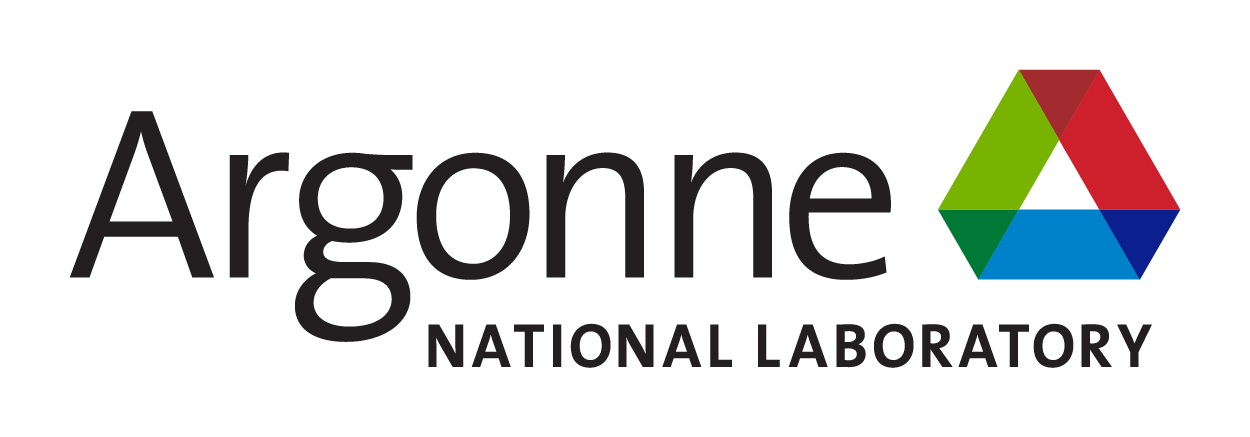
Nuclear Reactors 1366 – Argonne National Laboratory Is Working On Alternative Cooling Schemes For The Columbia Generating Station
The current fleet of commercial nuclear power reactors across the U.S. is cooled by water from a variety of sources. Rivers, lakes, and oceans are fed through systems that extract and dissipate heat from the reactor cores. However, the recent effects of climate change have been raising the temperature of bodies of water to the point where they cannot be used to cool reactors.
Climate scientists and nuclear science and engineering experts at the U.S. Department of Energy’s (DoE) Argonne National Laboratory (ANL) are collaborating to develop a plan B for nuclear power in Richland, Washington.
Scientists at the ANL will use Gateway for Accelerated Innovation in Nuclear (GAIN) funding from DoE to work with Washington’s Energy Northwest (EN) to guide the design and selection of future nuclear reactor cooling systems and their impacts on the cost of electricity in Washington state.
Rick Vilim is the manager of the Plant Analysis and Control and Sensors department in Argonne’s Nuclear Science and Engineering division. He is leading the research project with the assistance of Rao Kotamarthi, senior scientist in Argonne’s Environmental Science division.
According to Vilim, the most economical and best way to cool a reactor is to use a local, flowing waterway. These would include such sources of water as a lake or a river, for what is called “wet” cooling. Wet cooling makes it possible to easily conduct heat away from a reactor and its cooling rods. That is the current cooling design employed at Washington’s nuclear power plant, the Columbia Generating Station (CGS) in Richland, which produces nearly zero greenhouse gas emissions and eight percent of the state’s electricity. It relies on a steady flow of cold water from the Columbia River to keep its temperature down.
However, when considering construction of future nuclear power plants, EN thought it wise to develop a contingency plan in case the river conditions change. Despite the well-established wet climate of its most populous city, Seattle, Washington state is quite temperate and dry east of the Cascade Mountain Range. If evolving climate models indicate that warmer, drier days lie ahead, more aridity will obviously affect the volume, flow, and temperature of the Columbia River.
Vilima explains that there is an alternate dry cooling design which uses ambient air circulated across a reactor’s heat exchangers to conduct heat away from a reactor core. This would replace the reliance on a river or lake, or using fans or physics similar to those in a house chimney or car radiator.
Vilim said, “Dry cooling is not quite as efficient or as economical as wet cooling. However, if wet cooling isn’t available, it is your best option.”
Kotamarthi and his team are able perform impact analyses of risks from a changing climate, such as drought, heat waves and wildfire. The researchers can also provide translation of what that data means for local, immediate decisions. In addition, they can recalculate the data to demonstrate the effect 25 or 50 years from now. High performance computing resources at ANL give Kotamarthi and his group the capability to develop very high-resolution regional scale climate model projections. The current model resolution is about seven and a half miles. However, newer models in development are expected to get as specific as a two-and-a-half-mile area. -
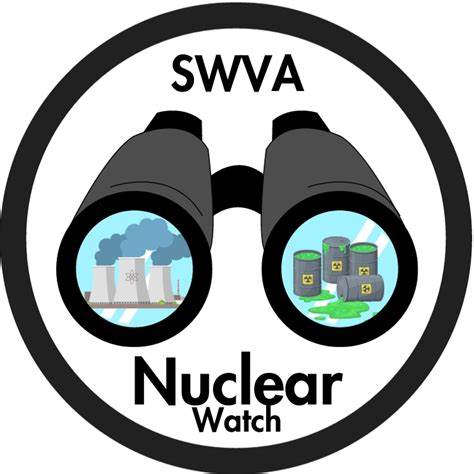
Nuclear Reactors 1364 – Activists In Virginia Are Fighting The Development Of SMRs In Southwest Virginia – Part 1 of 2 Parts
Part 1 of 2 Parts
A long-held stereotype of Southern Appalachians is that they are fatalistic, having a sense of being powerless to change their life circumstances. In a 1965 publication, “Yesterday’s People: Life in Contemporary Appalachia,” described the people. In the coalfields of Southwest Virginia today, there is organized effort among the people to counter this prejudice.
Governor Youngkin arrived unannounced at a former coal mine site near Norton in October 2022. He appeared at an invitation-only press conference to say that his “moonshot” was to put the nation’s first small modular nuclear reactor (SMR) in Southwest Virginia to revitalize the waning coal-based economy. This highly-publicized media event included statements from the region’s legislative representatives, local officials and individuals with special interests in promoting nuclear energy. They all declared the safety of these as-yet-undeveloped SMRs.
For more than a year there were no public meetings about SMRs, only legislative bills to support them as well as a site feasibility study. This study alarmingly identified seven “ideal” locations for the nuclear reactors near neighborhoods, schools, businesses, water reservoirs and even the Red Onion prison with the caveat that an “evacuation plan” would be required. In response to local environmental justice groups calling for transparency, officials said repeatedly that it was too early for public involvement. The officials said their concerns were premature, while avoiding discussing the dangers of creating and storing nuclear radioactive waste on site and the safety and health risks to local communities.
This past week, Governor Youngkin returned to Southwest Virginia. Once again, he did not announce his itinerary in advance. He began his day holding an invitation-only meeting at UVA’s College at Wise, and this time barred the press. As he left his public meeting in Abingdon at the end of the day, he responded to a reporter’s question about his plan to put SMRs in the coalfields. His stunning remark was that “The state’s first small nuclear reactor likely won’t be built in Southwest Virginia after all.”
Southwest Virginia (SWVA) Nuclear Watch is a burgeoning grassroots movement in opposition to siting SMRs here. During Youngkin’s trip to Wise County, local activists protested with yard signs and billboards that said, “Don’t NUKE SWVA.” Over the past seventeen months concerned citizens have issued press releases, distributed a brochure, placed classified ads and held the first public SMR Town Hall meeting in Norton, followed by community conversations in Clintwood, Pound, Wise, Norton, Coeburn, St. Paul, Big Stone Gap, Stickleyville and Dungannon. The purpose of these activities was to raise public awareness. One local merchant said, “90% of the customers coming into my store know little or nothing about what is going on.”
The activists have done their homework, unlike Delegate Kilgore who is reported saying he knew SMRs were clean, safe and reliable because a panel of experts told him they were. No SMR has been built or operated in the United States to validate these claims. NuScale is the only company given a design permit by the federal Nuclear Regulatory Commission. They went so far over cost, after billions of federal dollars in subsidies, that rural communities in Utah pulled out of an agreement to acquire electricity from the SMRs in ten years because of the high cost they were sure to incur. Utilitydive.com reported that “the financial challenges and cost trends witnessed in that (Utah) case will afflict any SMR project.” NuScale belongs to the Virginia Nuclear Energy Consortium.
Please read Part 2 next -

Nuclear Reactors 1356 – Researches At The Department Of Energy Study How Tungsten Conducts Heat – Part 1 of 2 Parts
Part 1 of 2 Parts
In the pursuit of clean and endless energy, nuclear fusion is a promising option. In fusion reactors, scientists attempt to make energy by fusing atoms together. They are trying to mimic the sun’s power generation process where things can get extremely hot. To deal with this, researchers have been diving deep into the science of heat management. Their focus is on a special metal called tungsten.
Tungsten is a chemical element; it has symbol “W” and atomic number 74. Tungsten is a rare metal found naturally on Earth almost exclusively as compounds with other elements. It was identified as a new element in 1781 and first isolated as a metal in 1783. Its important ores include scheelite and wolframite, the latter lending the element its alternative name.
Tungsten occurs in many alloys, which have numerous applications, including incandescent light bulb filaments, X-ray tubes, electrodes in gas tungsten arc welding, superalloys, and radiation shielding. Tungsten’s hardness and high density make it suitable for military applications in penetrating projectiles. Tungsten compounds are often used as industrial catalysts.
Scientists at the Department of Energy’s SLAC National Accelerator Laboratory are leading new research into tungsten. Their research highlights tungsten’s potential to significantly improve fusion reactor technology based on new findings about its ability to conduct heat. It is hoped that this advancement could accelerate the development of more efficient and resilient fusion reactor materials. Their results were published today in Science Advances.
Siegfried Glenzer is a director of the High Energy Density Division at SLAC and a collaborator in the new research. He said, “What excites us is the potential of our findings to influence the design of artificial materials for fusion and other energy applications. Our work demonstrates the capability to probe materials at the atomic scale, providing valuable data for further research and development.”
Tungsten is very strong, can handle incredibly high temperatures, and doesn’t get warped or weakened by heat waves as much as some other metals. This makes it especially effective at conducting heat away quickly and efficiently. This is exactly what’s needed in the super-hot conditions of a fusion reactor. Rapid heat loading of tungsten and its alloys is also found in many aerospace applications. These include rocket engine nozzles, heat shields and turbine blade coatings.
Understanding how tungsten works with heat offers hints on how to make new materials for fusion reactors that will be even better at keeping cool under pressure. In this research, the scientists developed a new way to closely examine the details of how tungsten manages heat at the atomic level.
In physics, a phonon is a collective excitation in a periodic, elastic arrangement of atoms of molecules in condensed matter, specifically in solids and some liquids. A type of quasiparticle, a phonon is an excited state in the quantum mechanical quantization of the modes of vibrations for elastic structures of interacting particles. Phonons can be thought of as quantized sound waves, similar to photons as quantized light waves.
The study of phonons is an important part of condensed matter physics. They play a major role in many of the physical properties of condensed matter systems, such as thermal conductivity and electrical conductivity, as well as in models of neutron scattering and related effects.
Please read Part 2 next -
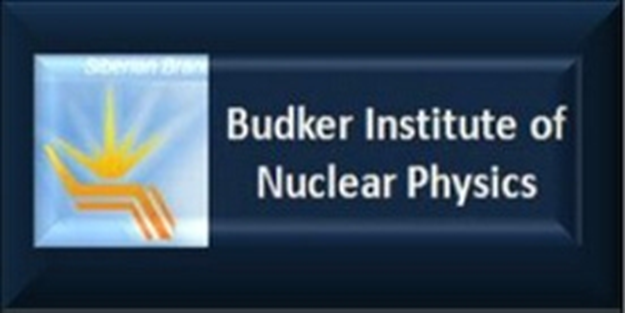
Nuclear Reactors 1341 – Russian Researchers Explore New Materials To Coat Walls Of Tokamaks.
Researchers at the GI Budker Institute of Nuclear Physics at the Siberian Branch of the Russian Academy of Sciences (INP SP RAS) has begun testing a new coating made from boron carbide for the walls of the International Experimental Thermonuclear Reactor (ITER) currently under construction in France.
The Russian Research has been reported in Nuclear Engineering International and explains that the team looked for a material to withstand damage caused by plasma abrasion during a thermonuclear fusion reaction.
ITER is a tokamak which is a toroidal vacuum chamber. Finding a material for the first wall that meets all the requirements was difficult. Carbon has been used in research for tokamaks to protect the walls but it proved problematic because it can retain hydrogen isotopes and radioactive tritium.
Currently, tungsten and beryllium are used in the first wall of the fusion chamber in ITER, which can withstand high temperatures and is very light. However, dust from beryllium is toxic and is a strong carcinogen.
Anatoly Krasolnikov is the head of the ITER center. He has been leading the team that looked for alternative options for covering the wall of the tokamak. The desired material needed to be heat-resistant, lightweight, with high thermal and electrical conductivity. The list of candidates included some types of ceramics which are typically used as insulators.
The Lavrentyev Institute of Hydrodynamics SB RAS, the Khristianovitch Institute of Theoretical & Applied Mechanics, and the Tomsk State University of Management Systems & Radio Electronics were all involved in the study.
A coating of special material was applied to a tokamak wall with a thickness of only tens of microns, and tests are being carried out at the BETA installation at INP SP RAS. During these tests, the material is subjected to intense thermonuclear pulse loads and a laser-powered thermal load from the plasma. Temperature absorbed and degree of erosion are being tracked using a diagnostic system. The moment erosion begins can also be tracked. It can cause roughness of the wall to change and can be identified with the subsequent loss of matter.
Dmitry Cherepanov is a Research engineer with the Russian team. He explained, “the purpose of the tests was to characterize the limit of the loads that our test martials can withstand during pulsed heating.”
Researcher Alexander Burdakov said, “We have been developing neutron protection from boron carbide with Virial (St Petersburg) for a long time. Viral company is a manufacturer of equipment components of ceramic and cera-metallic materials. This substance is very durable, has relatively good thermal conductivity, and we test it under the impulse loads that are characteristic of tokamaks.”
Boron carbide is similar to light beryllium. It does not cause the walls to cool quickly, and it also is readily available. When using boron carbide, there are two options because it can completely replace tungsten or be applied to tungsten walls as a protective coating.
Currently, the results from the BETA complex testing indicate that the threshold values of loads at which ceramics begin to collapse are similar to tungsten. Other tests also suggest that boron carbide is competitive with tungsten carbide and beryllium coatings.
-
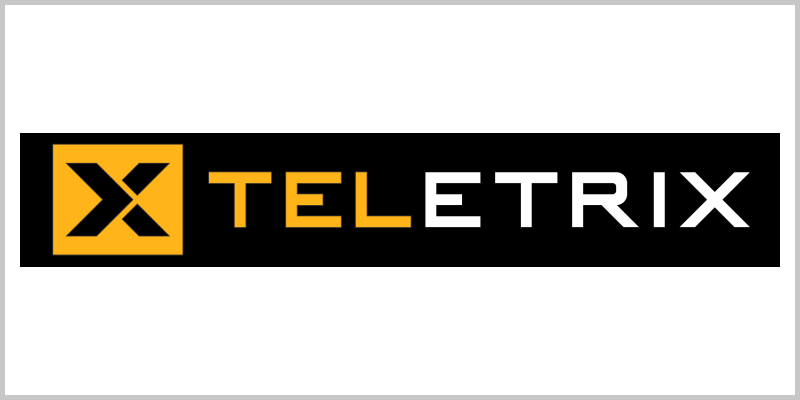
Nuclear Reactors 1217 – Oak Ridge National Laboratory Is Working On An Augmented Reality System To Allow Workers To See Zones Of Radiation – Part 1 of 2 Parts
Part 1 of 2 Parts
Augmented reality is a term that refers to the addition of computer-generated objects to the field of view of a person wearing special glasses that project images into their eyes. Along with virtual reality, AR has received a lot of attention in the technology press recently. While many uses have been suggested for AR systems, one use with great potential is industrial applications. Boeing has been using a system for years that allows a technician installing wiring in their passenger jets to see an image of the correct positioning of the wires in their field of view.
Researchers at Oak Ridge National Laboratory (ORNL) have developed a method of using AR to create accurate visual representation of ionizing radiation. The new technology has just been licensed by Teletrix, a Pittsburg, Pennsylvania based company that develops simulators to train radiological workers and radiological control technicians. ORNL announced the news of their work on May 4th.
A staff team at ORNL originally created an application called Virtual Interaction with Physics-enhanced reality (VIPER). Utilizing simulated radiation data and a gaming platform, the new technology divides a physical space into cubes. Each cube has a volumetric value of ionizing radiation by dose. That data is used to create a 3D image of gradient contours that is overlaid on a real-world view through the use of an AR headset. A person wearing the AR headset can move through a physical space with visual awareness of the contours of radiation. As they move, the device can calculate simulated, real-time exposure based on their movements. Last year, ORNL posted a video that demonstrates the use of the new technology in a laboratory setting.
Michael Smith is a nuclear space systems engineer at ORNL and a member of the development team for the new AR technology. He said, “We combined physics-based data with a gaming interface that provides a visual platform to make something invisible look and feel real—we took science and cinematography and brought them together.”
The AR development team includes ORNL’s Noel Nelson and Douglas Peplow of the Nuclear Energy and Fuel Cycle Division and former ORNL researchers M. Scott Greenwood and Nicholas Thompson. Originally, the AR project began as a one-year seed project funded under ORNL’s Lab Directed Research and Development program. The Nuclear and Radiological Protection Division of ORNL provided significant support.
Smith said “When it comes to training with ionizing radiation, [AR] is a superior and safer solution. Our team was at the right place at the right time to develop this technology. There was a synergy of hardware and software maturity coupled with an idea that’s been around a long time—the need to see ionizing radiation.”
Smith added that “Just by having a general impression of the spatial relationship of your body in a given radiation environment, you can decrease your overall dose based on really fundamental behavioral change. We can’t see ionizing radiation, so you just walk right through it. But once you have seen what the radiation in your working environment looks like, you can’t unsee it. AR provides a means to train people to have a better visceral understanding of how ionizing radiation behaves.”
Please read Part 2 next -

Nuclear Reactors 1192 – Dual Fluid And TRIUMF Are Collaborating On A Lead-cooled Small Modular Reactor
Canadian-German nuclear technology company Dual Fluid Energy Inc. has just signed a memorandum of understanding (MoU) with Canadian research center Tri-University Meson Facility (TRIUMF) at the University of British Columbia to advance development of a small modular reactor based on Dual Fluid Energy technology. Dual Fluid Energy said, “The goal of the new reactor concept is to use processed nuclear waste as fuel, and to exponentially increase the performance of today’s nuclear power production technologies.”
As part of the MoU, Dual Fluid Energy and TRIUMF will focus on materials research to address several challenges inherent to nuclear power. These include the identification of materials that can withstand the high demands in the reactor core, which operates at temperatures in excess of eighteen hundred degrees Fahrenheit and produces highly radioactive and corrosive conditions.
This research will leverage TRIUMF’s materials irradiation facilities which are known as the Proton and Neutron Irradiation Facilities and their metallurgical testing capabilities. Collaboration is also planned for detector development and reactor core imaging.
TRIUMP is located in Vancouver, British Columbia. It is a national center owned and operated as a joint venture by a consortium of universities. They also receive funding from the National Research Council of Canada.
Ahmed Hussein is the chief research officer at Dual Fluid Energy. He said, “The collaboration with TRIUMF is a major milestone for us, as the planned material testing is crucial for further development. Given TRIUMF’s expertise, we cannot imagine a better partner.”
Kathryn Hayashi is the chief executive officer of TRIUMF innovations which is the commercialization arm of TRIUMF. She said, “TRIUMF is very pleased to be engaging with Dual Fluid on this exciting project. The world is looking increasingly to nuclear power as a major opportunity for energy generation, and TRIUMF is uniquely poised to advance these technologies through materials characterization at our leading-edge facilities and with support from our wide-reaching international network of subatomic physics research expertise. Our agreement with Dual Fluid also spotlights the strategic advantages that TRIUMF can enable for scientific collaborations between Canada and countries around the world.”
Dual Fluid Energy’s compact reactor design features two loops consisting of a fuel loop and a coolant loop. The reactor uses a liquid fuel comprising thorium, natural uranium and processed nuclear waste. Liquid lead is used as a coolant. The reactor is designed to operate with a fuel change interval of about twenty-five years. It can be used to generate electricity and/or heat for the production of hydrogen. The company says that the operating temperature of eighteen hundred degrees Fahrenheit allows new heat applications. The reactor comes in two sizes. The DF300 will have a capacity of three hundred megawatts and the DF1500 has a capacity of fifteen hundred megawatts.
Dual Fluid Energy Inc. was incorporated as a public company in Vancouver, Canada in January of 2021 to bring Dual Fluid Energy technology to serial production status. Construction of a prototype of a Dual Fluid Energy reactor is scheduled to begin in this decade. Serial production will begin around 2034.
